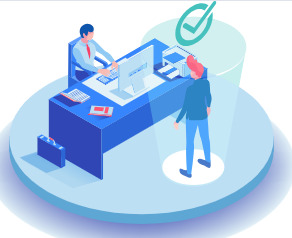#Tranche 2 AML Reform and Transaction Monitoring
Explore tagged Tumblr posts
Text

Tranche 2 AML Reform and Transaction Monitoring | NameScan
Learn how to implement an effective transaction monitoring program in Australia. Explore the best practices to ensure AML/CTF compliance and identify financial crime.
#tranche 2 aml for tcsps#aml and ctf#aml checks for legal industry#aml/ctf rules in australia#Tranche 2 AML Reform and Transaction Monitoring
0 notes
Text
Tranche 2 AML Reform and Transaction Monitoring Guide
As Australia intensifies its efforts to combat financial crime, Tranche 2 AML reform is poised to reshape the regulatory landscape, especially for professionals in legal, accounting, and real estate sectors. These reforms expand the scope of Australia's Anti-Money Laundering and Counter-Terrorism Financing (AML/CTF) regime to include designated non-financial businesses and professions (DNFBPs), which were previously outside its purview.
In this comprehensive guide, we’ll break down what the Tranche 2 AML reform means for your business, why transaction monitoring is a critical component of compliance, and how tools like NameScan can streamline your compliance strategy.
What Is Tranche 2 AML Reform?
Tranche 2 AML Reform and Transaction Monitoring refers to the proposed legislative amendments that aim to bring DNFBPs under the AML/CTF Act. While Tranche 1 focused on financial institutions, Tranche 2 will include:
Lawyers and conveyancers
Accountants
Real estate agents
Trust and company service providers
These professions often handle large transactions, making them attractive channels for money laundering and terrorist financing. By including these entities under the AML/CTF framework, Australia aligns itself more closely with global standards set by the Financial Action Task Force (FATF).
Why Is Tranche 2 AML Reform Important?
Australia has long been criticized for delaying the implementation of Tranche 2 reforms. The FATF and Transparency International have highlighted gaps in the current regulatory framework. The absence of mandatory AML/CTF obligations for DNFBPs presents a risk to the integrity of Australia's financial system.
Once enforced, the Tranche 2 AML reform will mandate affected businesses to implement:
Customer Due Diligence (CDD)
Ongoing transaction monitoring
Suspicious Matter Reporting (SMR)
AML/CTF compliance programs
Understanding Transaction Monitoring
Transaction monitoring is the process of tracking customer transactions to identify unusual or suspicious activity that may indicate money laundering or terrorism financing. It involves:
Monitoring transactions in real time or retrospectively
Setting thresholds and rules for flagging suspicious activity
Reviewing transactions against a customer’s expected behavior
Generating alerts for further investigation
Under the upcoming Tranche 2 AML reform, DNFBPs will be required to adopt robust transaction monitoring systems.
Key Challenges in Implementing Transaction Monitoring
For many DNFBPs, compliance with AML/CTF obligations is a new and complex responsibility. Key challenges include:
1. Limited Resources
Smaller firms may struggle with the cost and complexity of implementing transaction monitoring systems.
2. Lack of Expertise
Unlike banks and financial institutions, DNFBPs may lack in-house compliance officers or AML experts.
3. Data Management
Effective transaction monitoring relies on accurate, real-time data, which may not be readily available.
4. False Positives
Without fine-tuned rules, systems may generate excessive alerts, overwhelming compliance teams.

Practical Steps to Prepare for Tranche 2 AML Reform
Whether you're a law firm, accounting practice, or real estate agency, the time to act is now. Here's how to prepare:
1. Understand Your Obligations
Familiarize yourself with AML/CTF requirements. Visit AUSTRAC’s official website or consult with a compliance expert.
2. Risk Assessment
Conduct a risk assessment to identify your exposure to money laundering and terrorist financing risks.
3. Develop an AML/CTF Program
Design a program tailored to your size, structure, and risk profile. Include procedures for CDD, reporting, and transaction monitoring.
4. Adopt Technology Solutions
Use intelligent tools like NameScan’s transaction monitoring and PEP/Sanction screening to automate compliance workflows and reduce risk.
5. Train Your Team
Educate your staff on AML/CTF requirements, red flags, and internal reporting procedures.
How NameScan Supports Tranche 2 AML Compliance
At NameScan, we provide powerful, AI-driven tools that simplify compliance for businesses of all sizes. Our services include:
Transaction Monitoring: Detect suspicious activity using configurable rules and thresholds.
PEP and Sanction Screening: Identify politically exposed persons and high-risk individuals in real-time.
Ongoing Monitoring: Continuously track customer behavior for changes in risk profile.
Adverse Media Checks: Stay informed of negative news linked to your clients.
By leveraging NameScan’s AML solutions, you can ensure compliance with Tranche 2 reforms while saving time and resources.
👉 Explore NameScan’s AML Solutions
Frequently Asked Questions (FAQs)
1. What is Tranche 2 AML reform in Australia?
Tranche 2 refers to the extension of AML/CTF regulations to include DNFBPs like lawyers, accountants, and real estate agents.
2. When will Tranche 2 reforms be implemented?
While the government has committed to these reforms, the exact implementation timeline is still under consideration. However, businesses are encouraged to prepare in advance.
3. Who will be affected by Tranche 2?
All DNFBPs conducting high-risk financial transactions will fall under the AML/CTF Act once the reform is enacted.
4. What is transaction monitoring?
It is the process of analyzing customer transactions to detect patterns that may indicate suspicious or illicit activity.
5. How can NameScan help with AML compliance?
NameScan offers automated screening and monitoring tools that help businesses comply with AML regulations efficiently and cost-effectively.
Internal Resources for Further Reading
Understanding AML/CTF Compliance in Australia
What is PEP and Sanction Screening?
Benefits of Automated Transaction Monitoring
Final Thoughts
The Tranche 2 AML reform marks a significant shift in Australia's regulatory environment. As the scope of AML/CTF compliance expands, businesses must be proactive in adopting transaction monitoring systems and building internal capabilities. The cost of non-compliance is not only financial but also reputational.
At NameScan, we’re here to help you transition smoothly and stay ahead of regulatory change. Our tools are designed to empower your compliance team, protect your business, and support a safer financial ecosystem.
🚀 Get Ahead of Tranche 2 Reforms with NameScan
Don’t wait for the legislation to catch up—start building your AML/CTF program today with NameScan’s powerful compliance tools. 👉 Start Your Free Trial Now
#Tranche 2 AML Reform and Transaction Monitoring#tranche 2 aml for tcsps#aml/ctf act#aml checks for legal industry#tranche 2 reform
0 notes
Text

Tranche 2 AML Reform and Transaction Monitoring | NameScan
#Tranche 2 AML Reform and Transaction Monitoring#Tranche 2 AML for TCSPS#AML/CTF Compliance#Tranche 2#AML CTF Rules
0 notes
Text

Tranche 2 AML Reform and Transaction Monitoring | NameScan
#Tranche 2 AML Reform and Transaction Monitoring#AML Checks for Legal Industry#AML/CTF Rules in Australia#Tranche 2 Reform#AML/CTF ACT
0 notes
Text

Tranche 2 AML Reform and Transaction Monitoring | NameScan
#Tranche 2 AML Reform and Transaction Monitoring#AML/CTF Compliance#Tranche 2#AML CTF Rules#AML/CTF ACT
0 notes
Text

Tranche 2 AML Reform and Transaction Monitoring | NameScan
#Tranche 2 AML for TCSPS#AML/CTF Compliance#AML CTF Rules#Tranche 2 AML Reform and Transaction Monitoring#Tranche 2
0 notes
Text
AML Tranche 2 for Accountants: What You Must Know Now
As the Australian government moves closer to implementing AML Tranche 2 reforms, accountants across the country are facing a new regulatory landscape. These changes are not just compliance requirements—they are critical measures aimed at strengthening Australia’s financial system against money laundering and terrorism financing.
In this blog, we’ll explore what AML Tranche 2 means for accountants, why it matters, and how to prepare. With practical steps, compliance tips, and solutions from NameScan, this guide will help you stay ahead of the curve.
What is AML Tranche 2?
AML Tranche 2 refers to the proposed expansion of the Anti-Money Laundering and Counter-Terrorism Financing (AML/CTF) Act to cover high-risk sectors such as lawyers, accountants, real estate agents, and trust and company service providers (TCSPs).
Currently, Australia’s AML/CTF laws primarily apply to the financial services sector. However, under pressure from international bodies like the Financial Action Task Force (FATF), Australia is taking steps to broaden its AML/CTF coverage—hence, the introduction of Tranche 2.
Once implemented, accountants will be required to adopt full AML/CTF compliance programs, including customer due diligence (CDD), transaction monitoring, suspicious matter reporting, and recordkeeping.
Why AML Tranche 2 Matters for Accountants
Accountants often handle large financial transactions, corporate structuring, and tax matters—areas that are susceptible to abuse by criminals seeking to launder illicit funds. AML Tranche 2 aims to ensure that accountants are no longer an unregulated entry point into the financial system.
Key Risk Areas for Accountants:
Assisting clients with company formation
Managing trust accounts
Providing tax or financial advice involving large transactions
Handling international transfers
Failing to address these risks could expose accountants to legal penalties and reputational damage.
What Will Change Under AML Tranche 2?
Once AML Tranche 2 is enacted, accountants will face several new compliance obligations, including:
1. Customer Due Diligence (CDD)
Accountants must verify client identity, assess the purpose and intended nature of the business relationship, and understand the source of client funds.
2. Ongoing Monitoring
You’ll need to implement systems to continuously monitor business relationships and transactions for unusual or suspicious activity.
3. Suspicious Matter Reporting (SMR)
Any activity suspected to be linked to money laundering or terrorism financing must be reported to AUSTRAC immediately.
4. AML/CTF Program Implementation
You’ll need to develop and maintain an AML/CTF compliance program, including risk assessments, policies, procedures, and staff training.
5. Recordkeeping
Keep detailed records of client identification, transactions, and AML procedures for at least seven years.
How Accountants Can Prepare for AML Tranche 2
With the introduction of AML Tranche 2 on the horizon, accountants must start preparing now to ensure compliance and avoid regulatory penalties.
Step 1: Conduct a Risk Assessment
Understand the specific money laundering risks associated with your services and clients. Assess which services might be vulnerable and design risk mitigation strategies.
Step 2: Develop an AML/CTF Program
Create a comprehensive AML/CTF program tailored to your accounting practice. This should include internal controls, employee training, and independent reviews.
Step 3: Implement Identity Verification Systems
Use reliable Know Your Customer (KYC) tools to verify client identities efficiently. Automating this process reduces human error and speeds up onboarding.
Step 4: Leverage AML Screening Tools
Tools like NameScan provide real-time screening against global watchlists, sanctions lists, and Politically Exposed Persons (PEPs) databases. This is vital for identifying high-risk clients and transactions.
Step 5: Stay Informed and Educate Staff
Regular training ensures your team understands AML obligations and how to spot red flags. Keep up with guidance from AUSTRAC and the accounting industry.

Why Use NameScan for AML Compliance?
NameScanoffers a suite of powerful and cost-effective tools designed to help accountants meet AML/CTF obligations with ease:
PEP & Sanction Screening Instantly screen clients against global watchlists and identify politically exposed persons.
Ongoing Monitoring Get real-time alerts when client risk status changes.
Adverse Media Checks Monitor clients for negative news or risk indicators that may not appear on official watchlists.
Risk Assessment Reports Generate clear reports that support your compliance documentation.
With automated workflows and advanced risk detection, NameScan helps streamline your AML processes, reduce manual effort, and ensure your practice remains compliant under Tranche 2.
Explore NameScan's AML solutions for accountants
Semantic SEO Keywords Naturally Included:
AML Tranche 2 for Accountants
AML/CTF compliance for accountants
Know Your Customer for accountants
AML risk assessment accounting firms
PEP and Sanctions screening
AML software for accountants
AUSTRAC reporting for accountants
Frequently Asked Questions (FAQ)
Q1: When will AML Tranche 2 be implemented in Australia?
The government has announced its commitment to implementing AML Tranche 2, with legislation expected soon. However, no exact date has been set. Accountants are advised to begin preparations now.
Q2: Are all accountants affected by AML Tranche 2?
Only those providing services that may involve financial transactions, such as managing client funds, setting up companies, or offering tax planning, will fall under the scope.
Q3: What happens if I don’t comply with AML/CTF obligations?
Non-compliance may result in significant penalties, legal action, and reputational harm. It could also put your clients and business at risk of being exploited for money laundering.
Q4: Can small accounting firms manage AML compliance affordably?
Yes. Tools like NameScan are scalable and affordable, offering tailored solutions for small to medium accounting practices.
Q5: Where can I find guidance on AML Tranche 2 requirements?
Refer to AUSTRAC’s official website for regulatory updates and guidelines. You can also explore educational resources provided by industry bodies and compliance platforms like NameScan.
Final Thoughts
The introduction of AML Tranche 2 for Accountants marks a significant shift in regulatory responsibilities. While the new obligations may seem daunting, they are a necessary step in protecting Australia’s financial integrity. By preparing now and leveraging digital compliance tools like NameScan, accountants can ensure smooth adoption, reduce risk, and build client trust.
✅ Ready to Future-Proof Your Accounting Practice?
Let NameScan help you stay compliant, secure, and efficient. 👉 Start your AML compliance journey with NameScan today
#AML Tranche 2 for Accountants#tranche 2 aml for tcsps#aml/ctf act#aml checks for legal industry#aml/ctf rules in australia
0 notes
Text
AML/CTF Rules in Australia: What You Must Know in 2025
As financial crimes evolve in complexity, so do the regulatory frameworks designed to combat them. In Australia, AML/CTF (Anti-Money Laundering and Counter-Terrorism Financing) rules are undergoing significant changes in 2025, with new obligations, stricter enforcement, and expanded coverage. Whether you're a financial institution, a real estate agent, or a legal professional, understanding and adhering to these rules is no longer optional—it's a legal and ethical necessity.
In this guide, we’ll break down the AML/CTF Rules in Australia for 2025, who they apply to, what's new, and how your business can stay compliant with practical tools from trusted partners like NameScan.
What Are AML/CTF Rules in Australia?
The AML/CTF rules in Australia are part of a legislative framework regulated by AUSTRAC (Australian Transaction Reports and Analysis Centre). These rules are designed to prevent criminals from disguising the origins of illegally obtained money and funding terrorism.
Key obligations under the AML/CTF Act include:
Customer Identification and Verification (KYC)
Ongoing Customer Due Diligence (CDD)
Suspicious Matter Reporting (SMR)
Transaction Monitoring
Record Keeping
Originally tailored for traditional financial institutions, the scope of the AML/CTF framework has expanded to include Designated Non-Financial Businesses and Professions (DNFBPs), which brings us to the major developments in 2025.
What's New in 2025? Tranche 2 Reforms Explained
1. Inclusion of DNFBPs
One of the most anticipated regulatory changes is the implementation of Tranche 2 AML reforms, which extends obligations to:
Lawyers and conveyancers
Accountants and auditors
Real estate agents
Trust and company service providers
These industries now fall under AUSTRAC’s AML/CTF regulations due to their exposure to high-risk financial transactions. If you operate in these sectors, it’s crucial to implement robust compliance programs immediately.
2. Increased Enforcement and Penalties
AUSTRAC has been granted greater enforcement authority in 2025, enabling:
Heavier financial penalties for non-compliance
Greater scrutiny of reporting entities
Random audits and real-time compliance assessments
This means businesses must not only have AML/CTF programs in place but also demonstrate active, consistent enforcement.
Key Compliance Areas in 2025
1. Customer Due Diligence (CDD) & KYC
Know Your Customer (KYC) is no longer just a one-time task. In 2025, KYC is now part of ongoing customer due diligence, especially for high-risk clients. Businesses must:
Verify identity using government-issued documents or electronic databases
Monitor and reassess customer risk levels over time
Use enhanced due diligence for politically exposed persons (PEPs)
NameScan offers real-time PEP and sanctions screening tools that simplify compliance without compromising accuracy.
2. Transaction Monitoring
A strong transaction monitoring system helps identify suspicious activities such as:
Large cash deposits
Frequent international wire transfers
Irregular or unexplained transactions
NameScan’s transaction monitoring solution allows businesses to set custom thresholds and rules for identifying unusual behavior, ensuring compliance with AUSTRAC’s expectations.
3. Suspicious Matter Reports (SMRs)
If a transaction appears suspicious, you must submit an SMR to AUSTRAC within 24 hours (or 3 business days for less urgent cases). In 2025, delays or failures to report can lead to significant penalties. Automation tools that flag and report these matters quickly are essential.
Practical Solutions for AML/CTF Compliance
To keep pace with evolving regulations, businesses need automated and scalable compliance solutions. Here’s how NameScan helps:
✅ Real-Time Screening
Screen customers against global watchlists, PEPs, and sanctions lists in real time. This is vital for early risk detection during onboarding and throughout the business relationship.
✅ Automated Monitoring
Set dynamic rules for transaction monitoring based on customer profiles and risk levels. Get instant alerts when a transaction exceeds your risk thresholds.
✅ Detailed Reporting
Generate audit-ready reports for compliance officers and regulators. These reports provide traceability and ensure that your business is ready for AUSTRAC inspections.
✅ API Integration
Seamlessly integrate NameScan’s tools with your existing systems using robust APIs, ensuring minimal disruption and maximum efficiency.
Explore NameScan’s full suite of AML/CTF solutions here →
Who Must Comply with AML/CTF Rules in 2025?
The updated AML/CTF regime in Australia applies to:
Banks and credit unions
Payment platforms and cryptocurrency exchanges
Legal and accounting professionals
Real estate agencies
Gambling service providers
Trust and company service providers
Even startups and fintech companies that handle financial transactions must implement an AML/CTF program. Ignoring these rules can lead to license suspensions, fines, or even criminal charges.

Benefits of AML/CTF Compliance
Beyond avoiding penalties, staying compliant with AML/CTF rules in Australia provides several business advantages:
Reputation Protection: Avoid negative publicity tied to financial crime
Customer Trust: Demonstrates your commitment to ethical practices
Operational Efficiency: Automated solutions save time and reduce human error
Regulatory Alignment: Stay ahead of global compliance expectations
FAQs About AML/CTF Rules in Australia
Q1: What are Tranche 2 AML reforms? Tranche 2 reforms expand AML/CTF regulations to include DNFBPs like lawyers, accountants, and real estate agents, increasing the number of reporting entities under AUSTRAC’s supervision.
Q2: What is the penalty for not complying with AML/CTF rules? Penalties can include fines in the millions, license revocation, or even imprisonment for serious breaches, especially under 2025’s stricter enforcement rules.
Q3: How often should businesses review their AML/CTF programs? At least annually or whenever there is a significant change in business operations, risk exposure, or regulatory updates.
Q4: Can NameScan help small businesses with AML compliance? Yes. NameScan provides scalable solutions suitable for businesses of all sizes, including automated screening and transaction monitoring.
Q5: Do cryptocurrency companies fall under AML/CTF rules in 2025? Absolutely. Digital currency exchanges are considered high-risk and must comply fully with AUSTRAC’s AML/CTF obligations.
Final Thoughts
2025 is a turning point for AML/CTF compliance in Australia. With Tranche 2 reforms now in force, the landscape has shifted—making compliance a critical component of your risk strategy. But staying ahead doesn’t have to be overwhelming. NameScan equips you with smart, efficient tools that help you meet your obligations with confidence.
Don’t wait for a regulatory audit to act. Future-proof your business with NameScan’s AML/CTF solutions today.
👉Start your compliance journey with NameScan now
#tranche 2 aml for tcsps#aml checks for legal industry#tranche 2 reform#aml/ctf act#AML/CTF Rules in Australia
0 notes